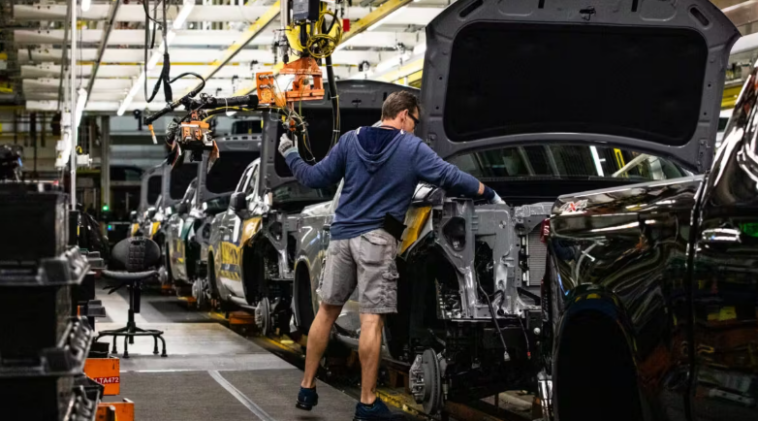General Motors is ramping up domestic production and creating American jobs—directly in response to President Donald Trump’s bold new 25% tariff on imported automobiles. The move is being hailed as an early victory for the administration’s aggressive America First economic agenda and proof that tariffs are already achieving their intended effect.
GM announced that it will significantly expand truck production at its Fort Wayne Assembly plant in Indiana, a facility that currently employs over 4,100 workers. The automaker plans to add hundreds of temporary workers and increase overtime shifts to meet rising demand and to offset costs associated with importing vehicles from overseas.
Dennys Pimenta, Plant Director at Fort Wayne, outlined the expansion plans in a communication to employees, noting that the plant will become a central hub in GM’s efforts to realign its operations and reduce reliance on foreign-built vehicles.
This shift aligns perfectly with President Trump’s recently implemented tariff policy, which imposes a 25% tax on all imported automobiles unless they are made in the United States. “What we’re going to be doing is a 25% tariff on all cars that are not made in the United States,” Trump said. “If they are made in the United States, there is absolutely no tariff.”
The goal of the tariff is clear: bring manufacturing back home, protect American workers, and stop rewarding companies that offshore production to places like Mexico, Canada, and Asia. And so far, it’s working.
The move is already having ripple effects across the global auto industry. South Korean automaker Hyundai recently announced a massive $21 billion investment in U.S. manufacturing over the next four years—another clear sign that Trump’s trade strategy is drawing real investment back to American soil. Trump celebrated the news as proof of concept. “This investment is a clear demonstration that tariffs very strongly work,” he said.
Not everyone is thrilled, of course. Canadian Prime Minister Mark Carney has threatened retaliatory tariffs, saying his government would seek to inflict “maximum impact in the United States” while shielding Canadian industries. But for the Trump administration, such reactions only reinforce the point: these countries have long taken advantage of one-sided trade deals, and now they’re being forced to the table.
Trump’s approach has always been unapologetically pro-American. The message to multinational corporations is simple—if you want to sell to the U.S. market, you’re going to have to make it here. GM’s announcement proves that American companies are paying attention and adjusting accordingly.
By bringing production back to Indiana, GM isn’t just adapting to the tariff—it’s investing in American workers, American communities, and American strength. The move is expected to boost local economies, increase tax revenue, and re-establish the U.S. as a manufacturing powerhouse.
This is what a results-driven economic strategy looks like. While critics wring their hands over short-term market reactions or foreign pushback, the Trump administration continues to deliver for working-class Americans. The tariffs aren’t just policy—they’re a signal that the days of surrendering U.S. jobs and industry to global competitors are over.
If this is the beginning of a trend, expect more companies to follow GM’s lead. Under President Trump’s leadership, making it in America is not just possible again—it’s the new standard.

